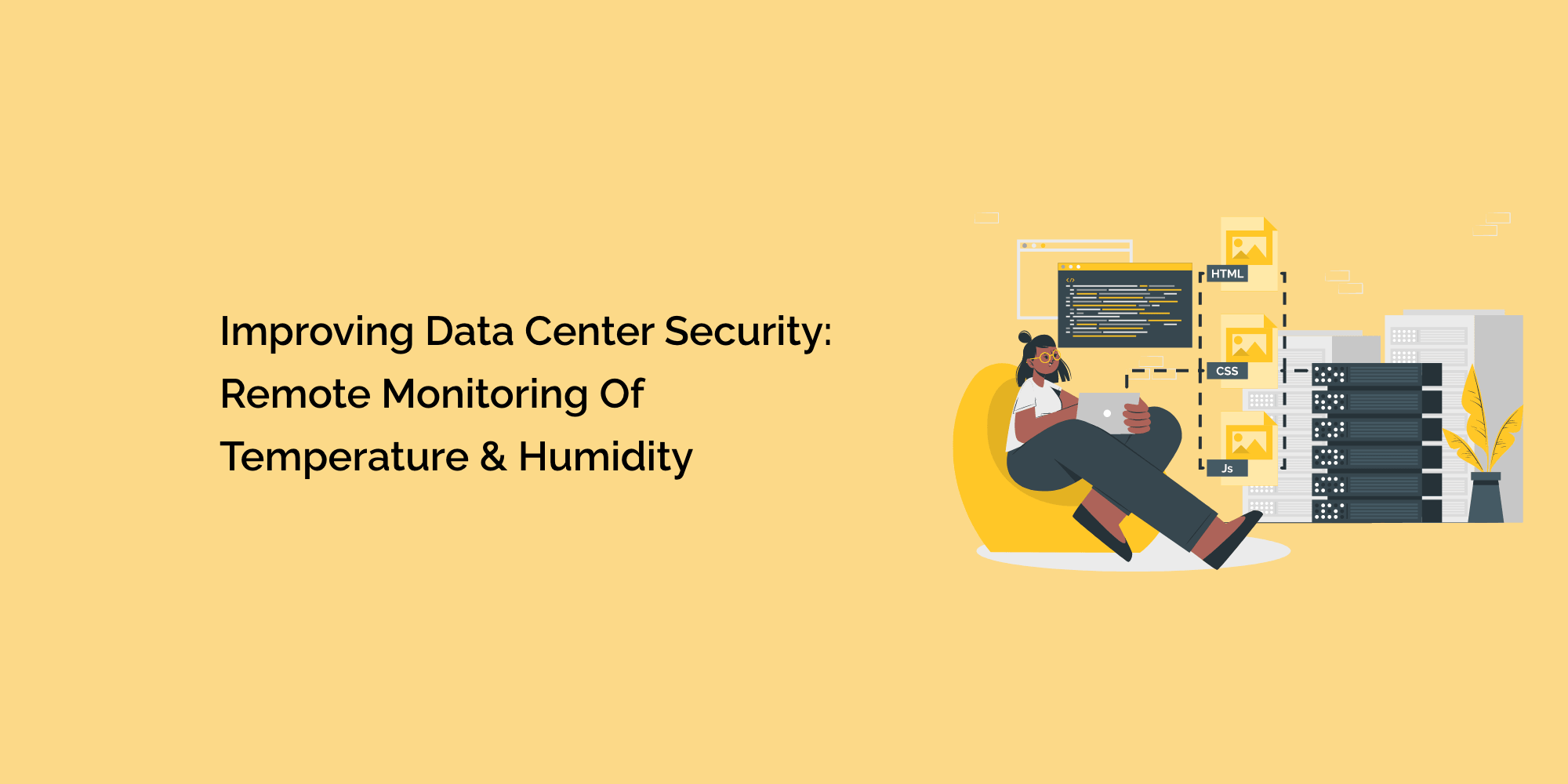Data centers are critical infrastructures that house sensitive and valuable information. Data security and integrity are of utmost importance for businesses and organizations. While data center security often focuses on access control and cybersecurity, monitoring environmental conditions like temperature and humidity is equally vital. This blog will explore the importance of remote monitoring of temperature and humidity in enhancing data center security and preventing potential threats. We will discuss the benefits, implementation considerations, and best practices for remote monitoring systems.
The Role of Temperature and Humidity in Data Center Security
Temperature and humidity play a significant role in maintaining optimal conditions for data center equipment. Deviations from the recommended ranges can lead to equipment malfunction, data corruption, and even catastrophic failures. We will highlight the potential security risks associated with improper environmental conditions and how remote monitoring can mitigate these risks.
Understanding Remote Monitoring for Data Center Security
Remote temperature and humidity monitoring involves using sensors and a centralized platform to monitor and analyze environmental conditions within the data center continuously. We will discuss how these systems provide real-time data, alert notifications, and remote access capabilities, allowing data center operators to monitor and address issues proactively.
Benefits of Remote Temperature and Humidity Monitoring
- Early Threat Detection: Remote monitoring systems enable the early detection of temperature and humidity anomalies, helping to identify potential threats before they escalate and cause significant damage or data loss.
- Proactive Alerts: Operators receive instant notifications when environmental conditions exceed defined thresholds, allowing them to take immediate action and prevent security breaches or equipment failures.
- Data Integrity: Maintaining proper temperature and humidity levels ensures the integrity and reliability of stored data, reducing the risk of corruption or loss.
- Compliance Requirements: Remote monitoring helps data centers meet regulatory compliance standards by providing documented evidence of environmental conditions and adherence to industry regulations.
- Remote Access and Control: Operators can remotely access and control the monitoring system, enabling quick response times and reducing the need for physical presence in the data center.
Implementing Remote Monitoring Systems
We will explore the critical considerations for implementing remote monitoring systems in data centers. This includes selecting the appropriate sensors, determining their optimal placement, choosing a reliable and scalable platform, and integrating the system with existing security infrastructure.
Best Practices for Remote Temperature and Humidity Monitoring
- Sensor Placement: Proper placement of sensors is crucial to ensure accurate and representative measurements. We will discuss the recommended locations for sensors, considering factors such as airflow patterns, equipment hotspots, and critical areas.
- Threshold Configuration: Setting appropriate temperature and humidity thresholds is essential. We will discuss best practices for determining these thresholds based on equipment requirements and industry standards.
- Redundancy and Backup: Implementing redundancy in the remote monitoring system ensures uninterrupted monitoring, even during sensor failures or network disruptions. We will explore backup options for data storage and backup power solutions.
- Regular Maintenance and Calibration: Regular maintenance and calibration of sensors are necessary to ensure accurate and reliable measurements. We will emphasize the importance of establishing a maintenance schedule and adhering to manufacturer guidelines.
Case Studies and Success Stories
We will showcase real-world examples of how organizations have enhanced their data center security through remote temperature and humidity monitoring. These case studies will highlight the security challenges faced, the solutions implemented, and the resulting benefits regarding threat prevention, data integrity, and overall security posture.
Future Trends in Remote Temperature and Humidity Monitoring
We will explore emerging trends in remote monitoring technology for data center security. This may include advancements in sensor technology, integrating artificial intelligence and machine learning for anomaly detection, and predictive analytics for proactive security measures.
Certainly! Here are some frequently asked questions (FAQs) about remote monitoring of temperature and humidity for data center security:
What is remote monitoring of temperature and humidity in data centers?
Remote monitoring of temperature and humidity in data centers involves using sensors and a centralized platform to monitor environmental conditions from a remote location continuously. It enables data center operators to receive real-time data and alerts about temperature and humidity.
Why is remote monitoring necessary for data center security?
Remote monitoring is essential for data center security as it allows operators to detect and address environmental anomalies that can impact the performance and reliability of critical IT infrastructure. By monitoring temperature and humidity remotely, operators can take proactive measures to prevent security breaches and equipment failures.
How does remote monitoring of temperature and humidity contribute to data center security?
Remote monitoring systems provide real-time insights into temperature and humidity levels, enabling operators to identify potential security risks. By setting thresholds and receiving alerts, operators can take immediate action to maintain optimal environmental conditions and prevent security vulnerabilities.
Conclusion
Remote monitoring of temperature and humidity in data centers is crucial in enhancing overall security. By providing real-time insights, proactive alerts, and remote access capabilities, these systems enable data center operators to promptly detect and address environmental anomalies, mitigating potential security risks. Implementing a remote monitoring system requires careful planning, proper sensor placement, and adherence to best practices. By incorporating these measures, data centers can improve their security posture, protect valuable data, and ensure critical IT infrastructure's continuous and reliable operation.








